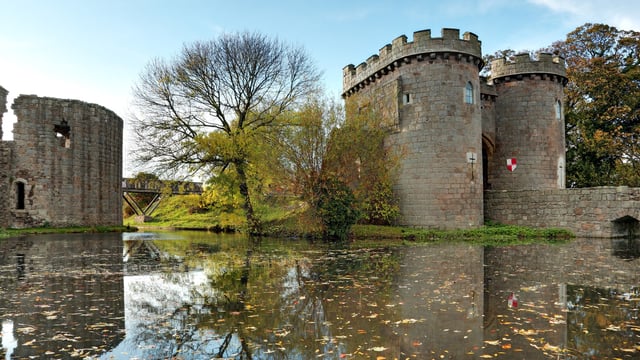Castles of the Welsh Marches in England & Wales
The Welsh Marches
The borderlands of England and Wales ranks up there with some of the most scenically beautiful areas of the United Kingdom. This is an area nestled between the Welsh mountains to the West and the English riverbeds to the east that has come to be known since William the Conqueror’s time as the Welsh Marches, or the March of Wales. The term comes from the early Medieval when a March, or a Mark, was used to describe a region that was fortified for defence against the neighbouring country. Denmark still retains its original socio-political function in its name to this day.
Following the Norman Conquest, William the Conqueror, then King of England, set out to subdue the Welsh by creating three Earldoms along the English border with Wales. These were the Earldoms of Chester, Shrewsbury and Hereford. William installed three of his most trusted Norman confidants, Hugh d’Avranches, Roger de Montgomerie, and William FitzOsbern, as Earls of each respectively. For the next four hundred years the Norman lords established more smaller marcher lordships along the border between the rivers Dee and Severn, and further west. The ‘March of Wales’, a term first used in the Domesday Book of 1086, was largely independent of both the English monarchy and the Principality of Wales.
It was during this period that hundreds of castles were built, by both the Welsh and the English; there are more castles in this region than any other region in England or Wales. It is not at all surprising that some of these castles are now little more than ruins – reminders of past attempts to dominate. But many of these castles still stand in their strategic positions. From Flint Castle in the north to Chepstow Castle in the south the castles of the Welsh Marches are some of the finest examples of Medieval architecture. The line of castles along this border follow two previous attempts by the English to keep the Welsh at bay. Wat’s Dyke is thought to have been constructed in the 8th century by Aethelbald, the king of Mercia from 716 to 757 AD. His successor Offa, who reigned between 757 and 796 AD, constructed the better known, and better preserved Offa’s Dyke.
Today the remains of these dykes and the Marcher castles, set in picturesque moorlands, farms, wooded river valleys, small villages, amongst half-timbered buildings, provide a wonderful opportunity to explore the turbulent history between Wales and England. The Offa’s Dyke Path and the Marches Way are two popular national long distance trails that run between the Severn Estuary in the south and Cheshire and the Irish Sea in the North.
Visit Castles of the Welsh Marches in England
Whittington Castle
Whittington Castle is unique in that it is the only castle in the United Kingdom to be owned and managed by a local community. A preservation trust was established to restore and maintain this strikingly picturesque castle, thought to have been constructed within the earthworks of a prehistoric hill fort. Whittington Castle is on the English side of Offa’s Dyke – here visitors will see a 12th century Marcher Norman Castle and its gatehouse, with a later Elizabethan addition – which now houses the gift shop.

Visit Castles of the Welsh Marches in Wales
Chepstow Castle
Situated on a narrow cliff-top overlooking the Wye River, Chepstow Castle is Britain’s oldest surviving post-Roman stone fortification. Building began in about 1067 AD under the Norman Earl William FitzOsbern, after which it helped facilitate the Norman conquest of Gwent. Among its medieval features are the oldest known castle doors in Europe. Construction continued until the 17th century, when the castle was again on the front line in the English Civil War. Chepstow is the southern-most castle in a string of castles built along the Anglo-Welsh border.

White Castle
One of the ‘Three Castles’ established to secure Anglo-Norman control in this area of Wales, the White Castle perhaps gets its name from stone walls that were once whitened with lime wash. The original Norman motte-and-bailey structure later gave way to a stone castle built in the 13th century, largely by Hubert de Burgh. The internal buildings and structure of the castle suggest it was built for military purposes rather than as a noble residence, although following King Edward I’s conquest of Wales it became increasingly superfluous.






